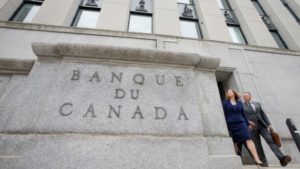On July 12, 2017, the Bank of Canada announced an increase to its key interest rate, which led many lenders to increase their rates. Many consumers are wondering what this means for them.
If you are in a fixed mortgage, what does this mean for you? Absolutely nothing. Your rate stays the same for the remainder of your term.
If you are in a variable mortgage, you will be affected. Before you start to panic and run to lock in your rate, let’s keep things in perspective.
Firstly, this was likely inevitable. This is the first increase in seven years so it was bound to happen at some point. Although most people thought it would happen in the fall, it was only a matter of time.
Next, a 0.25% rate hike sounds a bit scary so let’s put it into numbers. Let’s look at an example. According to the REALTORS® Association of Edmonton, the June 2017 average price for a single family home was $469 068. After a 5% down payment and the CMHC fee is considered, your mortgage amount is likely around $463 440. A general rule of thumb is the increase in Prime rate accounts for an increase of about $12.50 for every $100 000 of the mortgaged amount. In our example, this would be an approximate $58 increase in your monthly mortgage payments.
Now, will everyone with a variable see an increase in their mortgage amount? Well, not everyone. People that have an ARM (adjustable rate mortgage) will see a monthly payment increase to support the new rate. People that have a VRM (variable rate mortgage) will NOT see an increase in their monthly payment. Instead, their payments stay the same but more money will go to interest and less towards the principal, and the length of their mortgage life will be adjusted.
Lastly, whether you are in a fixed, variable, or thinking about buying, keep in mind that interest rates are historically low. It was not that long ago that interest rates were over 5% so it is still a great time to invest in real estate.
For more information, it is always best to contact a mortgage broker, so contact me with your questions.

